Who is Ameena? Enter our new illustration contest now!
Posted by Remya Padmadas on August 09, 2017IMPORTANT UPDATE: CONTEST DEADLINE EXTENDED TO AUGUST 30, 2017
Here’s your chance to illustrate a book for Pratham Books' StoryWeaver and get paid for it!
Some of us look at the word “tree” and doodle this:
And others conjure up something like this:
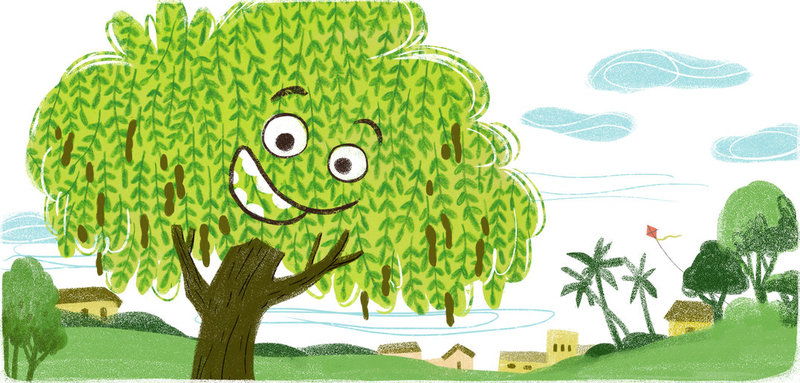
(Illustration by Archana Sreenivasan from 'Let's Go Seed Collecting')
or this:

(Illustration by Vinayak Varma from 'Jadav and the Tree Place')
If you belong to the second category, then this contest is right up your alley!
Who is Ameena?
We have got a fabulous story coming up - 'What is Ameena Upto?', written by Roopa Banerjee. It is a charming story about a girl called Ameena and the antics she gets up to when her family isn't looking. We know Ameena is a mischievous little girl with a big imagination. But what does she look like? What does her family and her home look like? All of that is up to you! This is your chance to illustrate a children’s book for Pratham Books StoryWeaver!
Here is an extract from the story ‘What is Ameena Upto?’
Everyone’s wondering what Ameena is up to on a sleepy Sunday afternoon. After all, where did the coconut shell, the paint, the buttons, and newspaper go?


The contest will be judged by award-winning illustrator, art director, writer, editor and overall publishing rockstar, Vinayak Varma. If we like your Ameena and vision the most, you will be chosen to sign a contract with us. You will get two months to illustrate the whole book, which will be published by Pratham Books on StoryWeaver. And yes, it’s a paid contract.
This is a Level 1 story, which is for children who are eager to begin reading. This is how pages of level 1 books look:
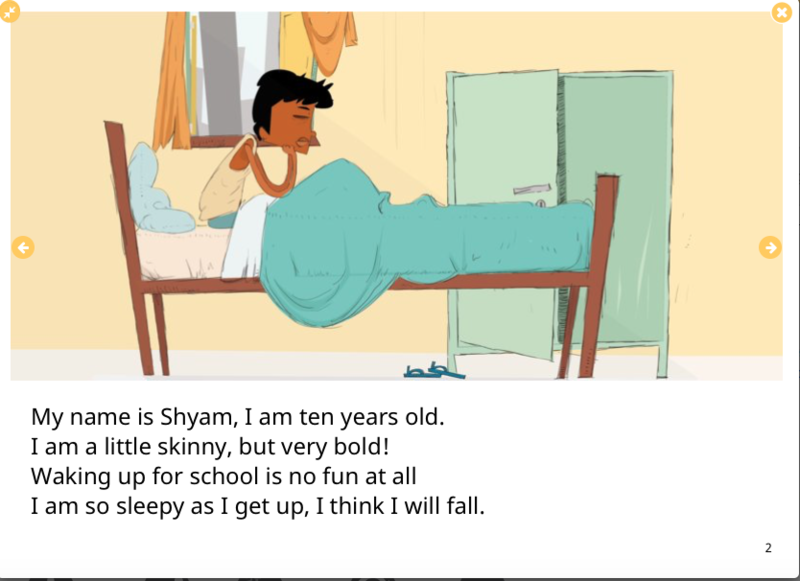
(From 'What If?', written and illustrated by Hari Kumar Nair)
Contest Guidelines
-
The contest will run from August 9-30, 2017.
-
Please send your illustration notes to [email protected].
-
Participants must be over the age of 17 to participate.
-
By submitting your original art work to 'Who is Ameena?' you are agreeing to a CC-BY license being applied to it (This license lets others distribute, remix, tweak, and build upon your work, even commercially, as long as they credit you for the original creation). To know more about CC-BY, click here.
Format
-
Size of illustration: 11.17 inches (width) x 5.35 inches (height). This is the recommended size as it fits neatly into one of the templates on StoryWeaver.
-
The illustrations should be high-res (150-300 dpi).
-
Format: JPEG
-
File size for each illustration: Between 2 to 4 MB; above 4 MB will slow down the upload process
For any queries, write to us at [email protected]!
comments (6)Aao Kahaani Bune 2017 Results
Posted by Khyati Datt on August 16, 2017A few months back, Pratham Books joined hands with Pratham and SCERT, Delhi to bring a special workshop for the SCERT Mentor Teachers in Delhi. The idea was to bring the teachers together and help them discover the storyteller within them to make classroom teaching more interactive. We conducted an extensive three-day training with these teachers (read about it here) and exchanged interesting ideas on how stories can be used to make learning interesting and classrooms more joyful!
To encourage our dear teachers to try their hands on StoryWeaver and create some resources on their own, we held a story writing contest only for the workshop participant group of the SCERT Mentor Teachers in Delhi. The contest invited them to send entries for Aao Kahaani Bune, 2017 and for them to weave stories around certain learning objectives of their preferred subject or language!
We received an enthusiastic response on this contest and after our judges went through the entries, they selected two stories that they judged to be the best. A big thank you to all the participants for taking part, and being patient with us as the judges read through each of your wonderful stories.
The results for Aao Kahaani Bune 2017 are finally here!
Each winner received a printed copy of their winning story and a hamper of some of Pratham Books’ select titles. Congratulations to the winners and we hope you continue to spread the joy of reading and continue creating wonderful stories for everyone to read and enjoy .
This year, we have 2 winning finalists:
Neeru Puri for ‘Going To School’
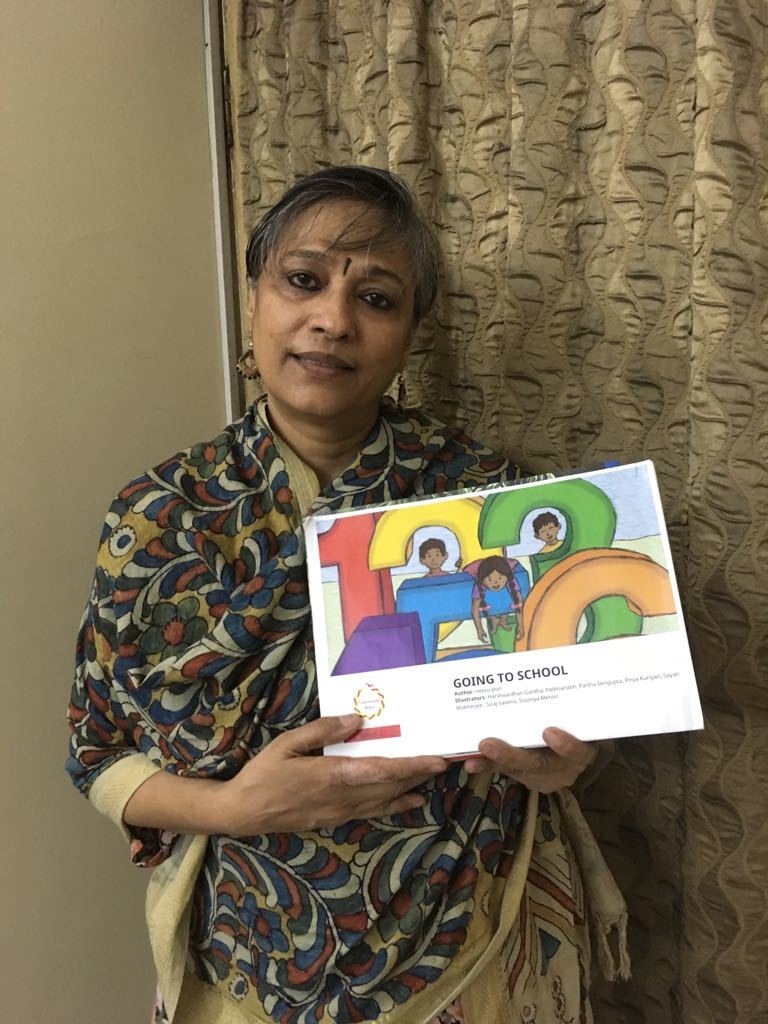
Suman Rawat for ‘दर्पण से सिखाया सबक’
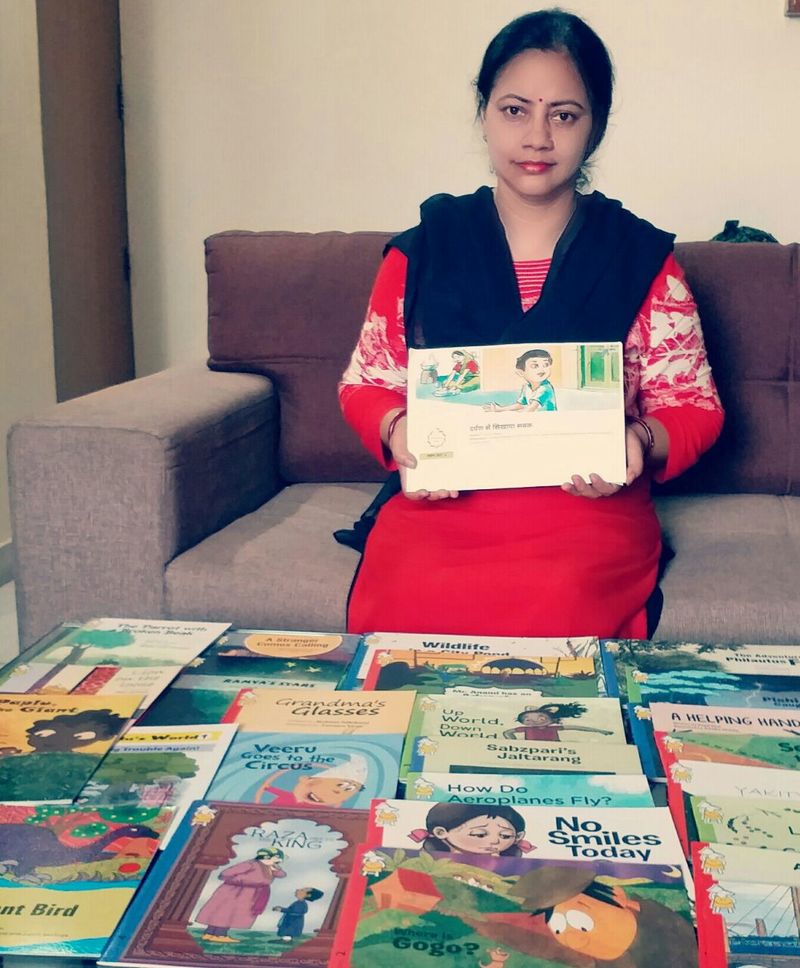
A big thank you to everyone who took part in the contest. Your stories are now on StoryWeaver to share with your friends, family and children across the world.
Be the first to comment.Vinayak Varma on illustrating picture books
Posted by Remya Padmadas on August 14, 2017Vinayak Varma is an illustrator, writer and editor based in Bangalore. He is the author of 'Angry Akku', 'Jadav and the Tree-Place' (Pratham Books) and 'Up Down' (Tulika Books), and was the founder editor of Brainwave magazine. His articles and short stories have been published in The New Indian Express, DNA, Deccan Herald, The Hindu, Muse India and Out of Print Magazine, and he has illustrated books for Penguin, Harper Collins, Hachette, Scholastic, Duckbill and Pratham Books. You can visit Vinayak online at www.mixtape.in, instagram.com/mixtape.in and twitter.com/eyefry.
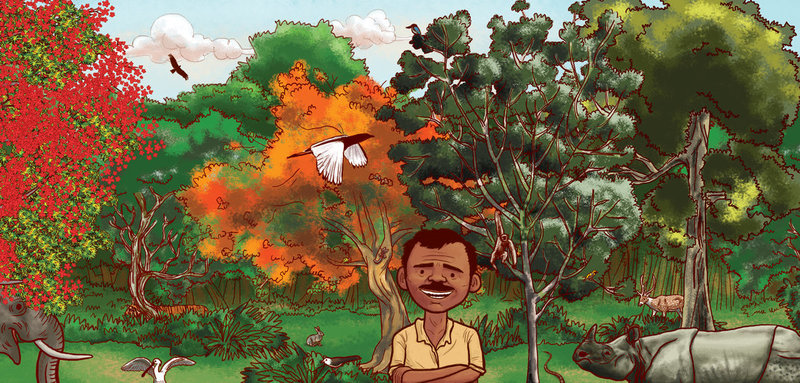
Vinayak is judging the 'Who is Ameena?' contest and shares some insights on illustrating for children's books for those of you planning to enter.
To start off with, here's a general overview of the process that I (and most other illustrators) follow:
1. Once I receive the brief for a book, I first try to identify a set of visual criteria that will work best for it:
- A governing style -- if I want to try something entirely new, which is different from the way I've drawn before, I create a mood board with a bunch of reference illustrations from various sources (Pinterest works particularly well for this purpose), and I try and spend some time at a good children's book store (like Lightroom in Bangalore) for some inspiration;
- The medium -- I decide what art materials I should use, how much of it should be traditional media, and how much can be digital, etc.;
- Visual research -- if I'm drawing an animal, for instance, I'll need photo references of that animal in various angles and poses. Similarly, for landscapes, buildings, flora, etc.
2. I then sketch character designs for the central protagonist(s) in the book. I do multiple iterations in several styles, so that I have varied options from which to choose.
3. Next, I make thumbnail drawings for all the illustrations -- these are very rough, and meant only to indicate the overall composition of each illustration. Along with these, I make one detailed drawing, as a proof of what the rest of the book will look like.
4. I then submit all these to the art director or editor I'm working with, for their approval.
5. Once approvals come in, and pending any corrections, I make detailed pencil sketches of all the pages (based on the thumbnails I already made), ink these drawings, and go ahead with the final colouring.
A few general tips and tricks:
-- You can build consistency in your artwork (and pose a fun creative challenge for yourself) by defining a very specific colour palette, and drastically limiting the number of inking and colouring tools you use. Visual consistency also comes from creating a strong internal logic for your style of illustration, and sticking to it. For example, some artists choose to draw characters' eyes as little black dots, some draw white circles with black dots, some draw them in the shape of large pomfrets, and some draw anatomically correct eyes. Similarly, there are the artists who draw buildings, landscapes and objects with perfect perspective and clean lines, while others may use a more impressionistic approach. What you choose to do in any of these instances is entirely up to you, but once you've made your choice, you need to stand by it for the rest of the book.
-- Your art should add a whole new dimension to the story. Instead of merely repeating what the text says, allow your illustrations to take creative liberties, and add interesting details that go beyond what the writer has suggested. Remember that picture books always have two authors -- both the writer and the illustrator are creative equals in this medium, working in tandem but with distinct viewpoints -- so don't be shy of exerting your unique authorial and artistic vision.
-- Having fun while illustrating is important, of course, but it might also benefit your artwork to imagine that this might be your last and greatest work, and that everyone is going to judge the hell out of you based on how well this turns out. I often use this strategy to frighten myself into delivering (I hope) a somewhat-above-average product. And it works for the most part -- except when I allow the fear to paralyse me into a state of deep inertia... Hmm. On second thoughts, maybe this isn't the best advice in the world. Yeah, okay, forget I said anything. Just do that 'having fun' part.
In summary: look at lots of picture books before starting out, make strong artistic choices, take plenty of creative risks, and have fun.
For more details on 'The Who is Ameena?' contest and to enter, click here.
Be the first to comment.